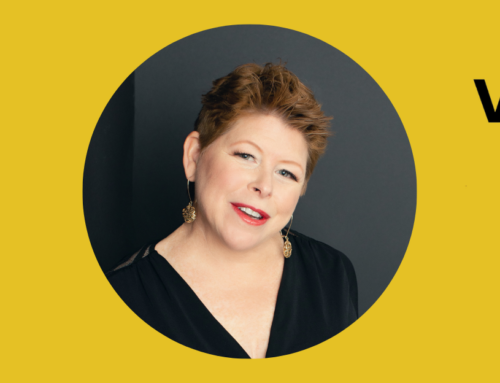
March 28, 2024
Episode #103: Win-Win Community Service Projects
In this episode of the Volunteer Nation, Tobi Johnson discusses how you can create win-win community service projects, and delves into the different types of community service, outlining effective strategies for designing quality projects, and maintaining good relationships with referring organizations.
Tobi discusses the nuances of managing community service projects, particularly those that are court ordered, the ethical considerations and practical aspects of integrating such projects into volunteer programs, emphasizing the importance of creating a win-win scenario for both the organization and participants.
Community Service – Episode Highlights
- [04:35] – Designing Win-Win Community Service Projects: A Guide
- [05:05] – Exploring the Debate: The Ethics of Mandatory Community Service
- [11:46] – Types of Community Service: Understanding the Landscape
- [17:20] – Aligning Volunteer Roles with Personal Goals
- [18:30] – Creating Quality Community Service Experiences
- [30:24] – Building Strong Partnerships for Successful Community Service
Community Service – Quotes from the Episode
“If designed and managed well, community service projects that are consistent, predictable, and repeatable have high potential. They can offer a targeted influx of people power to help support important recurring needs for your organization.”
“The second big question you might want to ask as you’re designing your project, is do we have realistic expectations for this complex kind of relationship? This is a transactional relationship. It’s between you and the volunteer, but it’s also between the organizations that refer volunteers to you.”
Helpful Links
About the Show
Nonprofit leadership author, trainer, consultant, and volunteer management expert Tobi Johnson shares weekly tips to help charities build, grow, and scale exceptional volunteer teams. Discover how your nonprofit can effectively coordinate volunteers who are reliable, equipped, and ready to help you bring about BIG change for the better.
If you’re ready to ditch the stress and harness the power of people to fuel your good work, you’re in exactly the right place!

Contact Us
Have questions or suggestions for the show? Email us at wecare@volpro.net.
Rate, Review, & Follow Us on Apple Podcasts
If you love the content Tobi shares on the Volunteer Nation podcast, consider rating and reviewing the show! This helps us reach more people – and help more good causes just like yours – successfully engage enthusiastic, dedicated volunteers with less stress and more joy.
Click here, scroll to the bottom, tap to rate with five stars. Then, select “Write a Review” and let us know what you loved most about this episode!
Also, if you haven’t done so already, follow the podcast so you don’t miss a thing. Follow now!
Subscribe to ProNews: Our Weekly Resource Roundup
If you’d like to stay up to date on all new podcasts, blogs, freebies, and deals posted on our Tobi Johnson & Associates and VolunteerPro websites, subscribe to our weekly ProNews newsletter.
Every Wednesday, we’ll send you a digest of our freshest content, plus a bonus! Once you confirm your subscription, you’ll get our [Free eBook] The New Volunteer Manager: The First 90 Days.
Episode #103 Transcript: Win-Win Community Service Projects
Tobi Johnson: Welcome everybody to another episode of the Volunteer Nation. I’m your host Tobi Johnson and I want to talk about community service projects. I was talking with one of our Volunteer Recruitment Boost Camp students a couple of days ago and she said her organization had decided. to put the pause button on their community service projects, specifically their court ordered community service projects.
And I thought, that’s interesting. And I’m not sure if it’s a good thing or a bad thing. It really depends on your organization and what you want to take on. But I thought it might be helpful if you are considering whether you’re going to shut down your court ordered community service or other community service projects or you’re thinking about starting some up or You’ve got one’s going and they’re not going so great in any of these situations Today’s podcast is for you. I will break down a little bit about what types of service projects are out there how to create a win-win for both you and the participants in these projects and maybe even give you a few ideas for different projects you might offer people in your community.
So, you know, court ordered community service is an interesting one. Sort of being voluntold. So, we’re going to break that down as well. What does that mean when we volun-tell people? So, we’re going to do that, but without further ado, I also want to talk about our upcoming free webinar, How to Become an Irresistible Magnet for Today’s Volunteers.
Becoming that lucky organization. Volunteers can’t wait to join, and support is a pretty good, I don’t know, goal for an organization, but it’s not always achievable or it doesn’t feel like it is anyway. Perhaps you’ve been struggling to build back your volunteer base since COVID. Maybe you’re having a hard time attracting the right volunteers with the right skills.
Maybe you feel like you’ve had a lack of follow through or a disinterested public. And maybe your volunteers feel burned out. And maybe you do too. If any of this feels familiar, just know you’re not alone. And during this webinar, I’m going to break down how you can start addressing these challenges. And the first thing we want to do is pinpoint what’s holding you back.
And so, my colleague Patricia and I have been developing an assessment tool, an assessment tool that’s based on our volunteer strategy success path. And as part of this webinar, we’re going to give you access to this volunteer strategy success path assessment. So, you can see if you’re on the right path and also pinpoint some areas that you might want to improve.
And during the webinar, we’re going to help you learn how to read the results of this assessment. So, this is the first time we’ve ever done this type of thing, but we have been working on this. The full assessment that’s for our volunteer pro members is in the works and we’ve been planning it for a long time and we’re finally getting around to doing it.
So, we want to also offer those of you who may not be members yet, just a taste of what that assessment’s all about. So, in this webinar, I’m going to show you how to recruit and retain committed volunteers with the right mix of skills, experience and attributes. So, if you’re ready to register, go to volpro.net/magnet to save your spot one of those emails that comes your way, your reminder emails for the webinar, they are going to have the link to the free assessment.
So, I hope you plan to join us. And without further ado, got that out of the way, now we got another further ado. And this further ado is about how to create better community service projects, ones that are win-win for both our organizations and those who participate in them. You know, court ordered school-based scholarship required.
It really seems like mandatory community service projects are here to stay. And in this episode, I want to share what you need to do to smoothly integrate community service into your volunteer offerings, decide it’s not a fit for you, or improve what you already have going on. But let’s really address that elephant in the room right off the bat, because there’s been plenty of debate in both education circles, but also in the community.
Volunteer circles as to whether this type of activity is something that’s ethical, right? So, according to the U. S. Department of Labor, volunteering is something that is not, people are not coerced to do. They’re not coerced to do. They’re not required to do it. That’s being voluntold. So, in some ways community service, these types of community services or service projects are not actually even volunteering.
You might think of it that way. However, your organization can decide to offer this as a service to your community, to help those community members that do need to put some time in, help them do it in a place that It fills them with joy, gives them a sense of purpose, and also gets them some needed skills and some people they can refer to when they’re out looking for jobs, trying to get into a new job, etc.
So, in a way, yes, your volunteers are providing a kind of community service for your organization. But if you think about it, your organization is kind of providing community service to your city, your town, your community, your neighborhood. It’s a two-way street for sure. So, if you decide that your organization wants to continue, keep on listening and I’ll share some ideas for how you might want to make that happen.
Make this work well and things to be on the lookout for so let’s keep going if you’re still listening you still think you know what community service is, okay? We’re going to work with it not against it, but you know you may also say you know what we don’t believe in Anybody should be voluntold and you have a right to think that way as well, so it’s really up to you to decide what way you want to, what side of the fence you want to be on, on that debate.
But for those of you who have decided, yes, we’re going to continue with community service, we’re going to start community service let’s, let’s keep going and talk about how you can do it well. Because again, if you’re going to be involved in these kinds of partnerships, if you’re going to partner with people in the community and offer them opportunities at your organization, you want these relationships to be win-win for everybody.
Thank you. So, there’s no way around it. It’s different, as I’ve said, than volunteerism that is freely chosen and giving. Simply because volunteers are being voluntold doesn’t mean that the experience shouldn’t be designed well. So, if we’ve decided to take the step forward, then we need to do it well. So, I’m going to give you some steps, three big steps, and help you develop a program you can be proud of. So, the first step, really, to community service projects and to win-win community service projects is to make sure that they are designed well. And they need to be designed well with a policy in mind. You need to establish a policy. You need a level playing field that helps you determine who is suitable for your community service projects and how you work with people in community service.
So, it should be your organization, not the volunteer department on its own, that decides these policies. Because mandated community service is something a little bit different than, you know, Unpaid volunteering at will. So, you should absolutely, if you’re working in the volunteer services, or you’re the volunteer coordinator, you should be advising your executive leadership, but really this decision involves human resources, and the organization’s philosophy and policy should be decided by your governing body. So, let’s, let’s just get that out of the way. Make sure that you have a policy and make sure that everybody agrees and that even the folks at the highest levels in your organization understand it and agree to it.
When you are considering establishing an agency wide policy around community service, there’s some questions you might want to ask yourself. So, one of them is, does mandated community service align with your organization’s mission and vision? So, we talked about the debate around whether this is a kind of volunteering and whether it might be a kind of volunteering that you want to support.
So, if you’re a youth development organization, then community service may make complete sense. If you are a civil rights or activist organization, you know, community service may not be. The right fit for you. So, you really must think, does community service align with your organization? The important thing, I think, is that there is robust discussion around whether the purpose and intent behind community service is there at all and aligns with the foundational values of your organization. You want to have a really good conversation because this conversation will also lead to buying in. What you don’t want is to move forward with community service and have people be resistant to it. Then, you know what, who loses in that situation?
The volunteer, the person involved in community service, because they will feel and sense that resistance and they will take it personally and think it’s about them when it really isn’t about them. So, it’s important to really engage in the pros and cons, have a healthy debate, and once the decision is made, the decision is made and then everybody needs to step in and support it because the people who get hurt are not the staff people.
Although, yes, we could be annoyed, right? People aren’t with the program. Get with it. But it’s really the participants that will feel the resentment and wonder if it’s about them and we don’t want that, right? So, the other question you might want to ask when you’re establishing your agency wide policy is what kinds of community service will we support?
There are different organizations that have different requirements, and some organizations accept some types of community service and not others. So, let’s break these down. So, there are You know, four or more types of community service. So, let’s break them down a little bit and your organization can decide to do only one of these, two of these, three of these, all four of these.
You can decide to do everything or not. You can also decide times of year, like, hey, we’re doing student school-based service learning only. in the summertime so that your organization gets to decide. Nobody can tell you what you need to do. So, the first type of community service is court ordered community service.
Sometimes it’s called community restitution or alternative sentencing, and it is a form of punishment. Make no bones about it. It is a form of punishment for a crime that is intended to benefit the community that has been harmed by an offender’s crime. So there needs to be a direct connection between the service and the crime.
Not super direct, but something where people are giving back, giving restitution to the community. And, you know, I’m a big believer in second chances for people. I am. I’m a big believer in when people have done their time. And they have paid for their crime that, you know what, they should be able to get back to regular life.
And court ordered community service sometimes is a way for people to not have to do jail time or not have to, go into detention or, or other types of punishment. It’s often used with people who are first time offenders, for example. So, we want to think about ways that we can show grace to people in our community.
You know, sometimes we want to figure out ways to show grace. So that would be our organization saying to ourselves, hey, we want to offer service to our community as well. So that’s court ordered community service. It is for crime, right? It is for crimes that people have, you know, made a mistake or maybe not, maybe they did it intentionally, but they got caught.
Right? So, again, sometimes we want to help people out, get them back on the right track, and we want to be part of that process. A second type of community service is Medicaid work or community engagement. There are some states here in the U. S. who require nonelderly, non-pregnant, and non-disabled adults.
Now, the reason they say nonelderly, non-pregnant, and non-disabled is because there are other types of Medicaid, Government assistance for those types of folks. So those folks who are non-elderly, non-pregnant, and non-disabled, some states will require them to either work or volunteer to qualify for their coverage.
And so, you think about that for a minute. If somebody needs to work or volunteer to keep their coverage and their Medicaid for example or their government benefits, that’s intense. That’s intense. So, we must take this very seriously. Right? And we want to give people dignity and respect, whether it’s for court ordered community service, Medicaid or whatever, you know, those are somebody else’s rules, and we must really take a hard look and decide.
And if we decide to move ahead, we need to decide to move ahead, in my mind anyway, 110%. We need to lean into supporting the folks who are engaged in these programs. Another type of community service is school-based service learning. So, this emphasizes the educational aspect of the experience for the student, and it often includes self-reflection activities.
And in fact, the more you can build self-reflection into your volunteering with students, the better because that’s how they learn from their experience. A fourth kind that’s very similar is community service for youth and young adults. It may be required for graduation or used to make college applications more competitive or to receive or maintain an educational scholarship.
I know in the state of Tennessee, when folks get Tennessee’s Promise, which is a scholarship for community college, they have service requirements. These project ideas for these types of services for youth and young adults are often initiated by the students themselves. So, in the school-based service learning and community service for youth and young that as well is a very important thing, even though the students don’t always see it that way.
It is something that can be very valuable in their lives. And I think with any of these types of community service, there are times when folks catch the nonprofit bug. They enjoy their experience so much that they decide to make work in the profit sector part of their job or part of their career.
So sometimes we spark interest in a career type activity. So that’s another reason why I think community service in nonprofits can be very helpful. for young people and even people who are leaving incarceration or avoiding incarceration. Maybe this gives them an idea of a new path for themselves.
want you to think about that. It’s important that we try to align, regardless of if you’re, If a volunteer is involved via community service or they’re involved just in regular volunteering, it’s very important that we align the roles and the goals for the roles with that person’s goals and interests and preferences regardless.
Even though with community service, part of that is there are more restrictions and guidelines provided by the referring organization. Volunteer Nation episode 68. I talk about how to align volunteer special skills with roles at your organization. So, they’re truly fulfilling. Check out Volunteer Nation episode 68, Match Volunteers for Joy and Purpose.
I’ll link to it in the show notes if you want to look at that. Regardless, if it’s community service of any kind, we still want to engage in the best practice of making sure that our volunteers find purposeful and meaningful work.
So, let’s take a pause for a quick break from our conversation about how to create a win-win. Community Service for Volunteers. And when we get back, I’m going to talk about how to design for quality involvement. So don’t go anywhere.
If you enjoyed this week’s episode of Volunteer Nation, we invite you to check out the Volunteer Pro Premium Membership. This community is the most comprehensive resource for attracting, engaging, and supporting dedicated, high impact volunteer talent for your good cause. Volunteer Pro Premium Membership.
helps you build or renovate an effective volunteer program with less stress and more joy so that you can ditch the overwhelm and confidently carry your vision forward. It is the only implementation of its kind that helps your organization build maturity across five phases of our proprietary system, the volunteer strategy success path. If you’re interested in learning more, visit volpro.net./join
Okay, we’re back with our conversation about how to create win-win community service projects. Before the break, we talked about the different kinds of community service projects. I talked about the debate around community service projects. And so, I hope it’s helped you think about it a little bit more.
But I really believe, and I’ll, I’ll re restate this and re really emphasize it, that once we decide that we are going to support this type of volunteering, I’m putting volunteering in air quotes, because it’s being voluntold. If we decide to move forward, we need to lean 110% and support the participants that are part of these opportunities.
It’s not something that they always have a hundred percent choice in. And, you know, that’s not on them. They didn’t create those rules. And so, we just want to make sure that they, like every volunteer, have a right and we have a duty to offer them something fantastic. All right? So, it’s just a mindset around this.
I don’t think we should be, if we’re, if we’re not going to support the participants 110%, then I don’t think we should be doing these projects. If we’re going to be resentful about them, if we’re going to feel like it’s just a hassle if we’re going to label people based on only a few people’s behaviors in these programs, I just think it’s not the right thing.
So, we have got to have a good mindset about this because there’s so many opportunities to help people have aha moments about their own lives and about what things they can do to help their communities. It can be quite empowering for people. So, let’s always look towards designing for quality involvement.
Your community service projects must be planned and administered. So, they’re a win for everyone. This is, this is a, this is a requirement. So, there are a few more questions as you’re thinking through this. you want to consider. One is what kinds of community service projects will you make available?
Again, while this is mandatory for the individual, it is not mandatory for your organization to organize community service projects or to offer them. You’ll want to weigh the potential costs and rewards of involvement for every role that you create, and you need to think about your organization’s mission, goals, and goals.
Goals, projects, but also your supervisory capacity because there’s also additional documentation in sometimes more intense supervision required with these projects. So, rather than creating busy work that doesn’t benefit the volunteer or your organization, you need to be thoughtful about which projects will move the needle forward.
So, you always want to ask what kinds of community service projects we will make available. Community service is almost always related to completion of a minimum number of hours. And so, by their very nature, they are project based. So, as you think about offering projects like this, you want to think about a beginning, middle and end.
You don’t want to think about how I can keep this person coming back? Because the deal you’re striking with them is that you give us this number of hours and we give you a meaningful experience, and we are both together to make an impact in our community. That’s the deal. The deal isn’t that people stay on.
So, by their very nature, community service projects are project based. So, here’s a few ideas for things that might benefit your nonprofit. You might simply have a community service participant buddy up with a more experienced volunteer to help.
That’s simple. You could have them clean up or beautify your landscape or offices. They could assist staff at a special event. They could decorate or take down decorations around the holidays. They might out with non-sensitive administrative work like data entry or bulk mailing, filing, making copies, assembling toolkits.
They could help with backpacks, training binders, goodie bags, you name it. Info kits they can work with a reception desk and make reminder calls. They could conduct research projects and data analysis. They could conduct other short-term activities like teaching computer skills, reading to kids, helping with foreign language interpretation, developing a welcome packet, designing marketing materials.
You know, when you think about community service, think about something, a project that somebody could put on their resume And that they might have a portfolio item, something they could show people that they worked on and ask people about their career goals and see if there’s something that matches what you will have to offer.
Remember, the volunteer also needs to be comfortable with the task, have the skills to complete it, or receive the training and support to be successful.
I have another Volunteer Pro Nation episode number 68, Match Volunteers for Joy and Purpose. If you’re interested in more about how you can match volunteers with the right roles, check that out.
The second big question you might want to ask as you’re designing is do we have realistic expectations for this complex kind of relationship? This is a transactional relationship. It’s between you and the volunteers, but it’s also between the organizations that refer volunteers to you.
So, when volunteers reach their threshold of hours. They have completed their part of the agreement and most of the time the referring organization doesn’t have a lot to do with Supervising volunteers in these It’s possible that the volunteer because they’re being voluntold doesn’t see the value of their service.
They might even feel Resentful that they’re required to show up. Hence you may encounter more resistance, attendance and motivation issues, and it may be more difficult to work with these volunteers than other volunteers, but I would not assume that. I would not assume that sometimes that happens that way and sometimes it doesn’t.
On the other hand, you know, looking on the bright side of things, it, you may find that this experience evolves into something inspiring and transformational for those participants. If the experience is designed well and volunteers find your organization a friendly, supportive place and feel a strong sense of community with the people there, there is a higher likelihood that this can occur.
You might check out Volunteer Nation episode 27 where I talk about building a sense of community with volunteers. I’ll put the link in the show notes. Part of this is about building community and making people feel like they belong, really giving them a warm welcome and helping them feel like they’re part of the team.
So, we need to put some thought into this, especially if community service volunteers are feeling a sense of shame for the reason. that they are ordered to do community service. Sometimes people’s resistance, you may sense resistance or resentment, but underneath what people really might be feeling is shame.
And so, give people some grace and you may be surprised to see what happens. I’ve done a lot of work with young people over the years when I worked in nonprofits, and sometimes the emotion or what people are presenting to you is not really what’s going on inside. So, if you’re patient with folks, sometimes.
You’ll see a new side of people if they know that they are welcomed, if they know that people are compassionate and want to help. So again, you know, if you choose this type of volunteer opportunity, you need to be willing to do these things. Okay. So, there’s a few other questions you might also want to ask.
What will be the application and onboarding requirements for these volunteers? Are they going to be different than other volunteers? conducting risk management is important, not only for this type of role, but for all your volunteer roles. We just want to make sure we have thoughtful, proactive management and program design.
Really figuring things out so you can do more, not less. So, you know, it’s not necessarily about keeping people out. It’s about making sure they’re matched with the right role. Now, sometimes it is, and you do need to do thoughtful screening, especially if you’re working with vulnerable populations such as kids and adults.
You might also ask when will we make community service projects available? So again, you get to choose. You could just say we’re doing student service learning only in the summertime or only during breaks, spring break winter break, and summer break. It’s up to you. You can do school semesters, you can do summer projects, or you can decide, you know, we’re going to do court ordered community service and whenever the court decides that they want to send folks our way, we’re going to be okay with that.
It really is important for your organization to decide. Again, you get to decide. It’s also important that you clearly communicate If you have opportunities available and when, right? So, for example, I was talking to somebody in our recruitment boost camp. Coaching call and they said, you know, we’re thinking we’re not going to offer court ordered community service anymore.
When should we let people know that? Should we still include that checkmark on our application that people are applying for because of that reason? And I said, yeah. And I don’t think so. I think you should put that on your webpage, so people don’t waste their own time filling out your application only to find out they don’t qualify.
I don’t think that’s very fair. If you used to accept all kinds of community service, you might make it clear on your website, which you don’t if you’ve stopped or sunsetted a program. Also, if you do, it’s probably a good thing to advertise as well. So, it is important to be really upfront about that.
Let’s also look at, and this is my sort of third set of advice or recommendations for you, is let’s figure out with, court ordered or any type of community service, how to make it a win-win by setting everyone up for success. Again, any type of community service, whether it’s service learning, court ordered community service student-based community service, Medicaid based community service, whatever it is.
If you invest valuable time in developing a solid community service program. Why not do everything you can to make this a real asset for your organization rather than a simply Nice to have project. So, you probably don’t have a lot of extra time on your hand. So, we should make sure that these projects are leveraged so that they make an impact.
This means that you also need to develop strong partnerships with those organizations that are referring people to you. They need to understand your organization’s requirements and limits. And you need to make sure you’re clear on your policies, needs, and participant rules, and have a plan in place to manage those reporting requirements.
In addition, it helps to talk to those. referring organizations about the kinds of projects and the impact that you expect from those participants so that they know that you have a high-level program, that you have a program of excellence. So, they’re looking out to refer people that might be the best fit for what you’re doing so you can help educate them about what kind of people are the right fit for us and what kind of support do we offer.
It helps people match even before they send people your way. As with any collaboration, it really is essential that you memorialize this with a written agreement that specifies the goals of the relationship, and logistics for service placements, and how problems will be addressed when they occur.
If folks are sending you people and they will do nothing to help you manage the relationship, you have to think for a minute whether that’s going to work for you. And maybe it will, maybe it won’t, but it’s helpful to really have a clear understanding about who’s responsible for what. And I would renew and refresh these agreements annually as the partnership evolves and as you learn together what works best and what you want to leave behind.
Now, some organizations are not going to budge. They do things their way and you must decide at that point whether It’s going to work for you. So sometimes you need to walk away from certain relationships, certain partnerships that just aren’t moving your mission forward because that is your number one, you know, that’s job one is to move the mission forward.
And if something is not supporting or moving your mission, then it’s not worth doing. I mean, you must be that sort of judicious when you’re choosing what types of things you’re going to get involved with as a nonprofit staffer. But the bottom line here is this. If designed and managed well, community service projects are consistent, predictable, and repeatable and have high potential. They can offer a targeted influx of people power to help support important recurring needs for your organization. They can also build confidence, connection, a sense of community, and civic pride for volunteers, making these projects a win-win for everyone. So, as you think about bringing volunteers in for community service projects, think about building a program of excellence.
It will not only make you feel good about the endeavor, but it will also certainly make your participants or at least contribute to a sense of wellbeing and pride in those you’re engaging. So, I hope this has been helpful. I know people think about this struggle with community service sometimes and I just wanted to give you some tips on win-win community service projects and really a lot about mindset and decision making.
I think sometimes people feel like they are a victim of this type of voluntold. Now the people who are being voluntold have a right to feel like a victim but we as organizations don’t because we actually have a choice. So, again, you can either choose, we’re not going to do this, or we’re only going to do this partly, or you can choose, yes, we’re going to do this, and if you say yes, please lean in 110%.
That will make all the difference in the productivity of your participants, but also in any transformation that they might encounter in their own lives, and who doesn’t want to be part of that? If you found this episode helpful, I hope you’ll share it with a friend, and I hope you’ll see me next week, same time, same place, on The Volunteer Nation.
Thanks, everybody.







